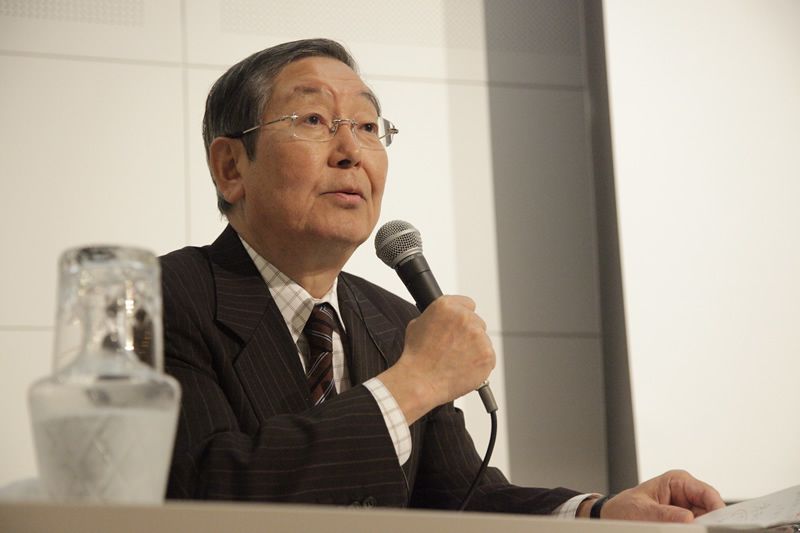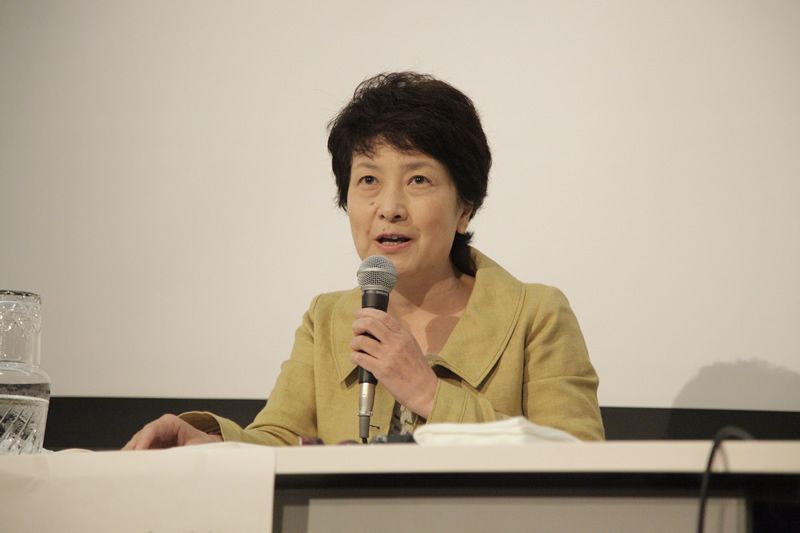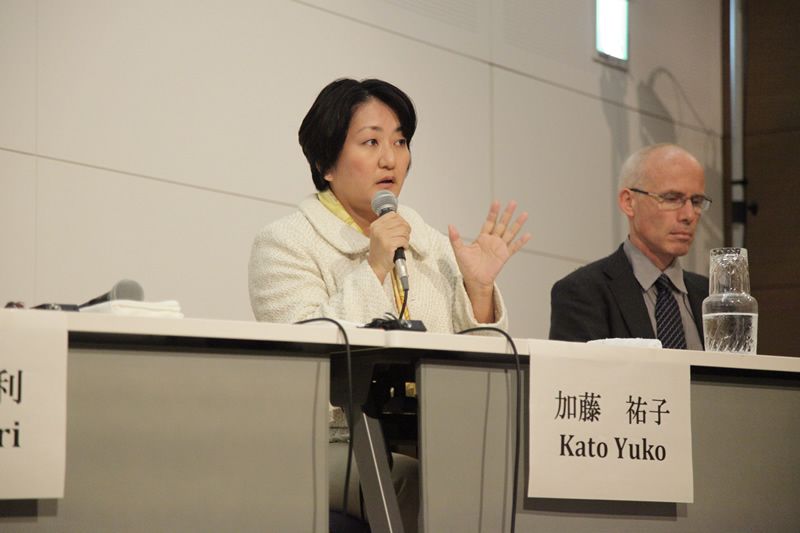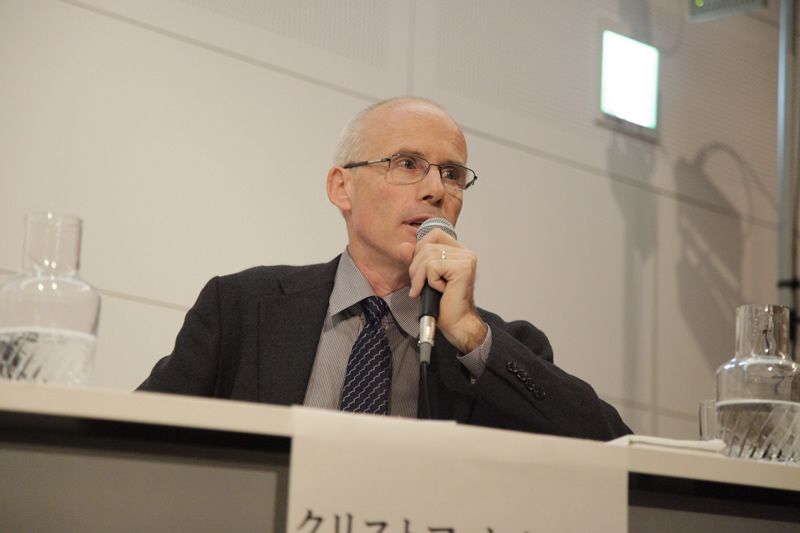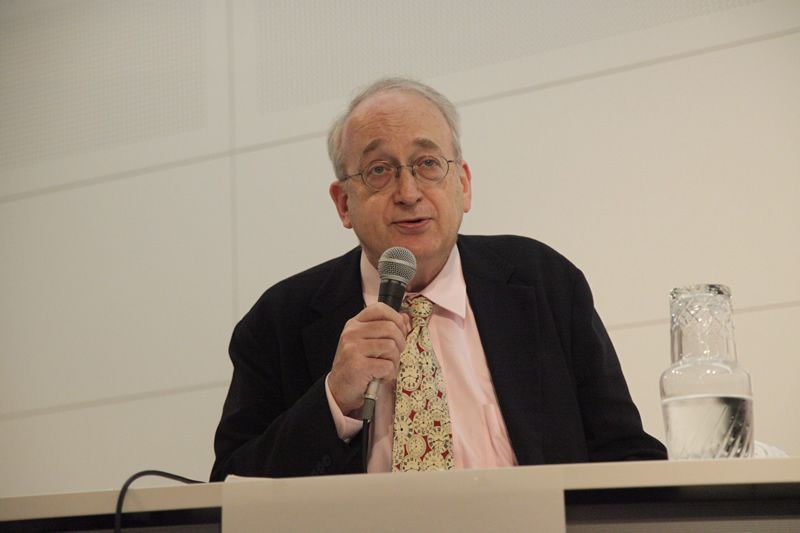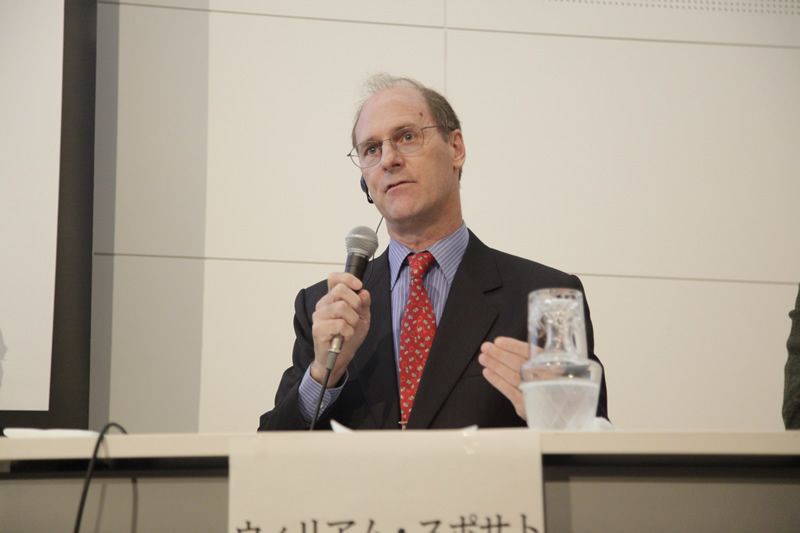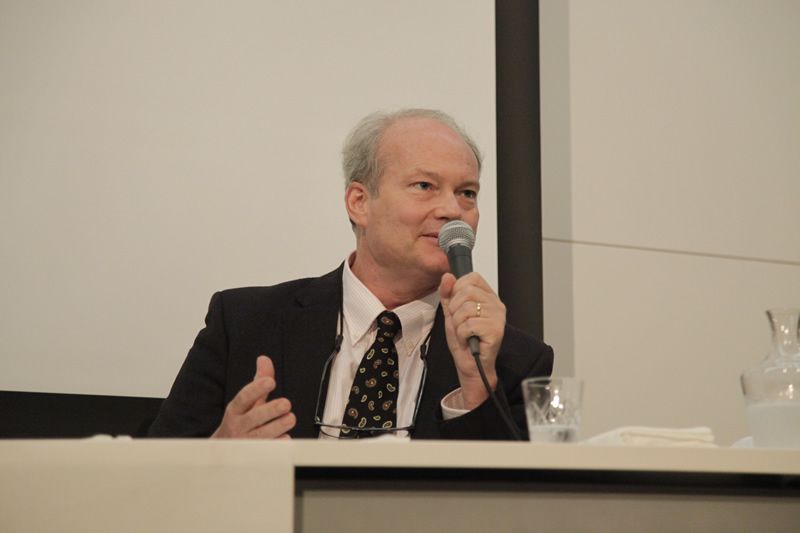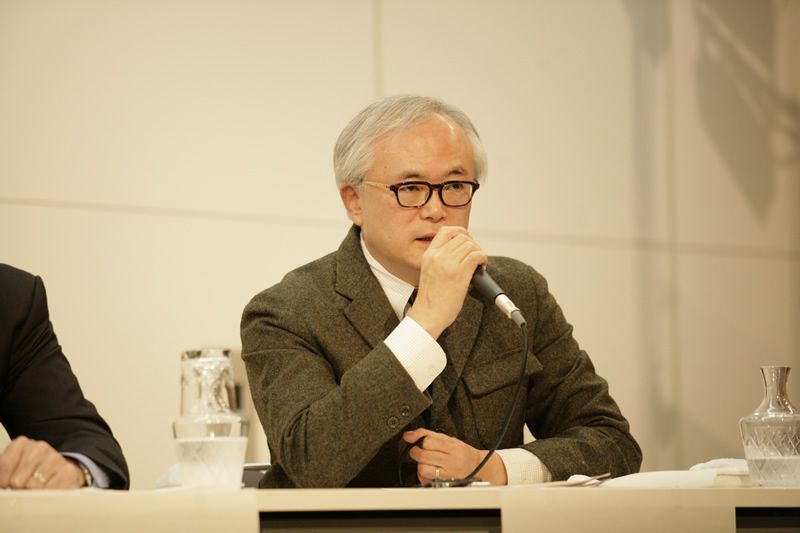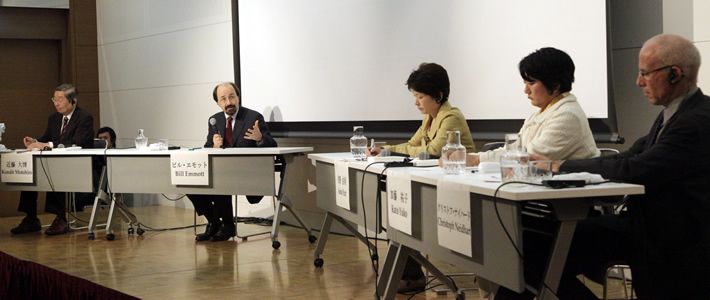
International Conference Report (Part Two) “Media Reporting and Risk Management After the March 11 Disaster”
Society- English
- 日本語
- 简体字
- 繁體字
- Français
- Español
- العربية
- Русский
The keynote address by former Economist editor Bill Emmott was followed by two lively sessions of panel discussions. The first of these addressed media reporting on Japan after March 11; the second focused on risk management. A summary of the main points follows.
Session 1: Media Reporting on Japan in the Aftermath of March 11
Moderated by Kondō Motohiro, former editor of Chūō Kōron
Did the Japanese Media Conceal the Facts?
Aono Yuri, Science Editor, Mainichi Shimbun
Aono denied suggestions that the Japanese media had deliberately concealed information. She said the main barriers to reporting were the difficulty of gaining access and the shifting nature of statements released by TEPCO and the government. In some cases, the Nuclear Safety Commission did not respond to requests for comments. The Japanese media did interview alternative sources, but in a context where there was no clear agreement on the facts, the media tended to give prominence to the “official” interpretation in the main news stories.
The government made frequent use of the expression that radiation “posed no immediate risk to health,” but failed to disclose figures for long-term, low-level exposure. There continues to be confusion about safe levels and no consensus exists among scientists. This makes it difficult for the media to report accurately and reliably.
A Preoccupation with Foreign Views of Japan
Kato Yuko, editor and translator, goo.ne.jp
Kato’s job involves analyzing and commentating on the foreign media. She began by noting the strong interest many Japanese people have in the way their country is seen internationally. The cautious approach of Japanese government figures and the main Japanese media led to a suspicion that the authorities were hiding things from the public. These factors led some people to suspect that only the foreign media were telling the whole truth.
Some of the foreign coverage in the immediate aftermath of the disaster was marked by hysterical reports and sensationalism. The credentials of some of the “experts” wheeled on to give their views were not always clear, or directly relevant. But now that the focus of the “star” journalists and tabloids has shifted to other parts of the world, Kato said the foreign journalists who remain in Japan are providing good-quality, in-depth coverage of the situation in Tōhoku.
Did the Foreign Media Overreact?
Christoph Neidhart, bureau chief, Süddeutsche Zeitung
Neidhart began by taking issue with the idea that reports of an “exodus” were exaggerated. Many people had fled Tokyo, he said—not all of them panicking foreigners. People forget quickly how bad the situation was, he said.
In Japan, people interpreted “no immediate risk” to mean “no risk.” In Germany, the tendency was to interpret this as a suggestion that there was a risk in the longer term. Indeed, Neidhart suggested, children in affected areas are already starting to show signs of thyroid problems. Neidhart claimed that parts of the Japanese media had played down the risks because of lucrative advertising contracts with TEPCO.
On the other hand, Neidhart had praise for the decision of the NHK to give open-mike opportunities to the mayors of towns and villages in Tōhoku, which he said was as an admirable demonstration of the freedom of the press. He said that much of the information in the foreign press came from the Japanese media—but that the Japanese media had tended to tuck the information away on the back pages, rather than featuring it prominently on the front page.
He pointed to what he described as mythologizing: “If you say ‘nuclear is safe’ enough times, people will start to believe it.” In fact, half of all nuclear accidents—albeit many of them small—have taken place in Japan. Far from dealing with the debacle in a meaningful manner, the government was supporting TEPCO’s attempts to export Japanese nuclear power technology to Vietnam. He said the government and TEPCO were largely to blame for any damage to Japan’s reputation caused by “groundless rumors,” since it was their incompetent and misleading reports that had caused the rumors in the first place.
Speaking from the floor, Paul Blustein, nonresident fellow, Brookings Institution and Senior Visiting Fellow, Center for International Governance, said that the media had “shockingly failed” to fulfill the principles Bill Emmott had outlined. Although there were few outright errors of fact in the English media, nevertheless the overall impression was that the entire archipelago was in danger, he said. There was pressure on journalists to get the most sensational story possible, and this had led to hysterical and disproportionate reporting.
Session 2: Crisis Management After March 11: Government, Industry, Individuals
Moderated by Andrew Horvat, director, Stanford Japan Center; adjunct professor, Meikai University
Crisis Management Issues for Japanese Companies
Eriguchi Takashi, Director, Tokio Marine & Nichido Risk Consulting Co., Ltd.
The image of Japan as a country battered by natural disaster has been seared onto the collective memory of the world, Eriguchi said. The disaster reconfirmed in the eyes of foreign stockholders just how much risk Japan faces.
The earthquake caused serious problems by disrupting supply chains, causing substantial losses to foreign as well as Japanese companies. Companies throughout Japan are now expected to fulfill their responsibility by explaining how they are addressing the risks of similar disasters in the future.
The earthquake itself was a major cause of supply chain disruptions. Substantial damage was done to factories far inland, even though the seismic intensity was in most areas well within the levels supposedly planned for.
Safeguarding lives is the top priority in a disaster, and better measures are needed for getting employees to safety.
William Sposato, deputy bureau chief, Tokyo Dow Jones Newswires/The Wall Street Journal
Sposato said this was one of the most complex stories he had encountered. Very few reporters understood the issues before the disaster happened.
He said that Japanese companies have tended to view handling a crisis and communicating information about it as two separate things. One of the lessons of the recent disaster was that both must happen at the same time.
Avoiding sensationalism was particularly difficult, he said, when many of the stories dismissed as “baseless” in the early stages of the disaster had subsequently turned out to be true.
Much of the information put about by the media and the experts has been confusing. To this day, no one can say what a safe level of becquerels per square meter is safe.
Why were standards not already in place? One reason, he suggested, was that TEPCO was worried that openly preparing for a disaster might suggest that nuclear power was not entirely safe.
Kan’s Performance and the Response of the Japanese Government
Jeff Kingston, professor of Asian studies, Temple University Japan
Kingston spoke in support of Prime Minister Kan Naoto, who resigned in August after “a five-month mauling by a lynch mob.” In fact, Kingston said, he had done relatively well. He had acted promptly by sending in the Self-Defense Forces and accepting offers of assistance from overseas. This was in contrast to the fumbling response of the Japanese government to the Kobe earthquake in 1995.
Kan had a “heroic moment,” Kingston suggested, when TEPCO wanted to evacuate the stricken power plant and Kan insisted they stay to clear things up. Kan’s policies were popular, but the man himself had little support and found himself on the hit list of the “nuclear village.”
Despite this, he had sacrificed his position to secure support for legislation on renewable energy. Certainly the situation would not have been better if the LDP had been in charge. The LDP had played party politics by calling a vote of no-confidence at a time of national crisis when 100,000 people were still homeless.
Taniguchi Tomohiko, former deputy press secretary, Ministry of Foreign Affairs
Taniguchi disagreed with this positive appraisal of Kan’s performance. In such a crisis, the prime minister needs to be not just a commander-in-chief but “everything-in-chief,” he said. Kan had failed to take responsibility by using the emergency legislation at his disposal.
Taniguchi said that inflexible thinking and a failure of imagination had been to blame for the government’s lackluster performance. He said the government needed a place of play, where experts could “think outside the box.” He contrasted the unimaginative policy-making of the Japanese government with the “scenario-writing” system in place in the United Kingdom and other countries, which encouraged people to speak their minds and come up with imaginative responses to potential disaster scenarios.
Positive Audience Feedback
Speaking after the symposium, Richard J. Samuels, Ford International Professor of Political Science at MIT and director of the MIT Japan Program, said he had been impressed by the way the symposium had helped to situate the problems in Japan in a wider context. “The comments of the panelists brought into sharp relief not only some of the most important issues surrounding 3/11 and the government’s response to it, but also the differences that people have,” he said. “Often people talk about these issues as if Japan existed in isolation, but of course it doesn’t. I thought Bill Emmott did a terrific job of putting things in context and saying: There is a generic pattern, and 3/11 followed this pattern. I think this it was a revelatory moment for a lot of us.”
“I learned a lot about how the Japanese and foreign media reacted to the disaster,” said Takashima Hatsuhisa, former NHK analyst and press secretary at the Ministry of Foreign Affairs. “I think the Japanese media needs to take the opportunity to reflect on what we got wrong.”
There are plans for a similar symposium on energy issues next year, to mark one year since the disaster.
Photographs by Nagasaka Yoshiki.
Media reporting crisis management Symposium panel discussion Kondo Motohiro Aono Yuri Kato Yuko Christoph Neidhart Andrew Horvat Eriguchi Takashi William Sposato Jeffrey Kingston Taniguchi Tomohiko media
